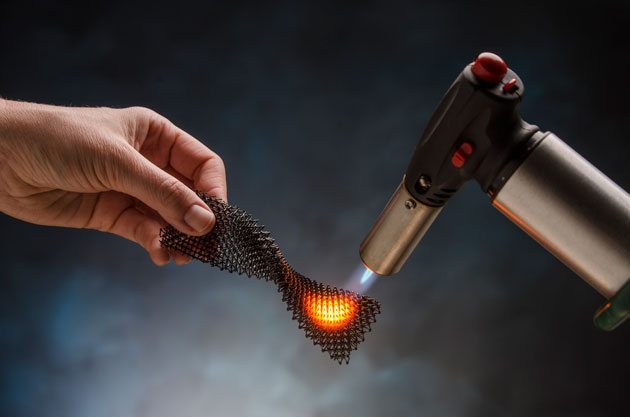While everyone was celebrating New Year’s Eve, on the 1st of January 2016 a team of researchers at HRL Laboratories had other reasons to be joyful. They were just finalizing their process to 3D Print Ceramic. For more than 60 years, HRL’s scientists and engineers have been on the leading edge of technology, conducting pioneering research, providing real-world technology solutions, and advancing the state of the art. Out of their beautiful office in Malibu, California, the team at HLR has achieved a new milestone in 3D printing technology by demonstrating an approach to additively manufacture ceramics that overcomes the limits of traditional ceramic processing and enables high temperature, high strength ceramic components.

How does it work?
HRL’s Senior Chemical Engineer Zak Eckel and Senior Chemist Dr. Chaoyin Zhou invented a resin formulation that can be 3D printed into parts of virtually any shape and size. The printed resin can then be fired, converting it into a high strength, fully dense ceramic. The resulting material can withstand ultrahigh temperatures in excess of 1700°C and exhibits strength ten times higher than similar materials.Temperature in the furnace needs to reach 1000°C. In the process the parts could shrink by about 30%. The ultraviolet light runs through a 3D Printer to make the object that will be fired in the furnace.
A real breakthrough
Ceramics are much more difficult to process than polymers or metals because they cannot be cast or machined easily. Traditionally ceramic parts are consolidated from powders by sintering, which introduces porosity and limits both achievable shapes and final strength. “With our new 3D printing process we can take full advantage of the many desirable properties of this silicon oxycarbide ceramic, including high hardness, strength and temperature capability as well as resistance to abrasion and corrosion.” says program manager Dr. Tobias Schaedler.
The novel process and material could be used in a wide range of applications from large components in jet engines and hypersonic vehicles to intricate parts in microelectromechanical systems and electronic device packaging.
HRL is currently looking for a commercialization partner for this technology. If you are interested, please contact us through the comments below and we’ll connect you.



